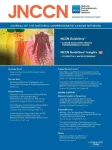Arthritis drugs already available for prescription have the potential to halt lingering lung problems that can last months or years after COVID-19 infections, new research from the University of Virginia School of Medicine and Cedars-Sinai suggests.
By examining damaged human lungs and developing an innovative new lab model, the scientists identified faulty immune processes responsible for the ongoing lung issues that plague an increasing number of people after they’ve otherwise recovered from COVID-19. These lasting harms of COVID infection, known as “post-infection lung fibrosis,” have no good treatments. The new research, however, suggests that existing drugs such as baricitinib and anakinra can disrupt the malfunctioning immune response and finally allow damaged lungs to heal.
“Our collaboration with doctors and computer biologists at UVA and Cedars-Sinai, including Drs. Chen and Zang, led us to uncover the root cause of persistent lung inflammation and scarring after severe acute COVID-19 and possibly other respiratory infections like the flu,” said researcher Jie Sun, PhD, of UVA’s Carter Center for Immunology Research and UVA’s Division of Infectious Diseases and International Health. “Using advanced technologies like spatial transcriptomics and sophisticated microscopy, we compared lung tissues from patients and animal models we developed in the lab. We found that malfunctioning immune cells disrupt the proper healing process in the lungs after viral damage. Importantly, we also identified the molecules responsible for this issue and potential therapeutic options for patients with ongoing lung damage.”
“‘Spatial-omics’ are state-of-the-arts technologies that can measure the molecular features with spatial location information within a sample,” explained researcher Chongzhi Zang, PhD, of UVA’s Department of Genome Sciences. “This work demonstrates the power of spatial transcriptomics combined with data science approaches in unraveling the molecular etiology of long COVID.”
The researchers note that the findings could prove beneficial not just for lung scarring from COVID but for lung fibrosis stemming from other sources as well.
“This study shows that treatments used for the acute COVID-19 disease may also reduce the development of chronic sequelae, including lung scarring,” said Peter Chen, MD, the Medallion Chair in Molecular Medicine and interim chair of the Department of Medicine at Cedars-Sinai. “Our work will be foundational in developing therapies for lung fibrosis caused from viruses or other conditions.”
Understanding COVID-19 Lung Damage
The researchers – led by Sun, Chen and Zang – wanted to better understand the cellular and molecular causes of the lingering lung problems that can follow COVID infections. These problems can include ongoing lung damage and harmful inflammation that persists well after the COVID-19 virus has been cleared from the body.
The researchers began by examining severely damaged lungs from transplant patients at both UVA and Cedars-Sinai. None of the patients had a lung disease that would have required a transplant prior to contracting COVID-19, so the scientists were hopeful that the lungs would provide vital clues as to why the patients suffered such severe lung damage and persistent fibrosis. Using the insights they obtained, the scientists then developed a new mouse model to understand how normally beneficial immune responses were going awry.
The researchers found that immune cells known as CD8+ T cells were having faulty interactions with another type of immune cell, macrophages. These interactions were causing the macrophages to drive damaging inflammation even after the initial COVID-19 infection had resolved, when the immune system would normally stand down.
The scientists remain uncertain about the underlying trigger for the immune malfunction – the immune system may be responding to lingering remnants of the COVID-19 virus, for example, or there could be some other cause, they say.
The new research suggests that this harmful cycle of inflammation, injury and fibrosis can be broken using drugs such as baricitinib and anakinra, both of which have already been approved by the federal Food and Drug Administration to treat the harmful inflammation seen in rheumatoid arthritis and alopecia, a form of hair loss.
While more study is needed to verify the drugs’ effectiveness for this new purpose, the researchers hope their findings will eventually offer patients with persistent post-COVID lung problems much-needed treatment options.
“Tens of millions of people around the world are dealing with complications from long COVID or other post-infection syndromes,” Sun said. “We are just beginning to understand the long-term health effects caused by acute infections. There is a strong need for more basic, translational and clinical research, along with multi-disciplinary collaborations, to address these unmet needs of patients.”
Findings Published
The scientists have published their findings in the prestigious journal Nature. The research team consisted of Harish Narasimhan, In Su Cheon, Wei Qian, Shengen Shawn Hu, Tanyalak Parimon, Chaofan Li, Nick Goplen, Yue Wu, Xiaoqin Wei, Young Min Son, Elizabeth Fink, Gislane de Almeida Santos, Jinyi Tang, Changfu Yao, Lyndsey Muehling, Glenda Canderan, Alexandra Kadl, Abigail Cannon, Samuel Young, Riley Hannan, Grace Bingham, Mohammed Arish, Arka Sen Chaudhari, Jun sub Im, Cameron L.R. Mattingly, Patcharin Pramoonjago, Alberto Marchesvsky, Jeffrey Sturek, Jacob E. Kohlmeier, Yun Michael Shim, Judith Woodfolk, Zang, Chen and Sun. Sun receives support for work unrelated to this research from Icosavax, while Woodfolk receives unrelated support from Regeneron.
The research was supported by the National Institutes of Health, grants AI147394, AG069264, AI112844, HL170961, AI176171, AI154598, F31HL164049-01A1, F31HL170746, R01HL132287, R01HL167202, R01HL132177, R35HL150803 and T32AI007496; and the Emory Center of Excellence for Influenza Research and Response, grant 75N93019R0028.
To keep up with the latest medical research news from UVA, subscribe to the Making of Medicine blog at http://makingofmedicine.virginia.edu.
END

